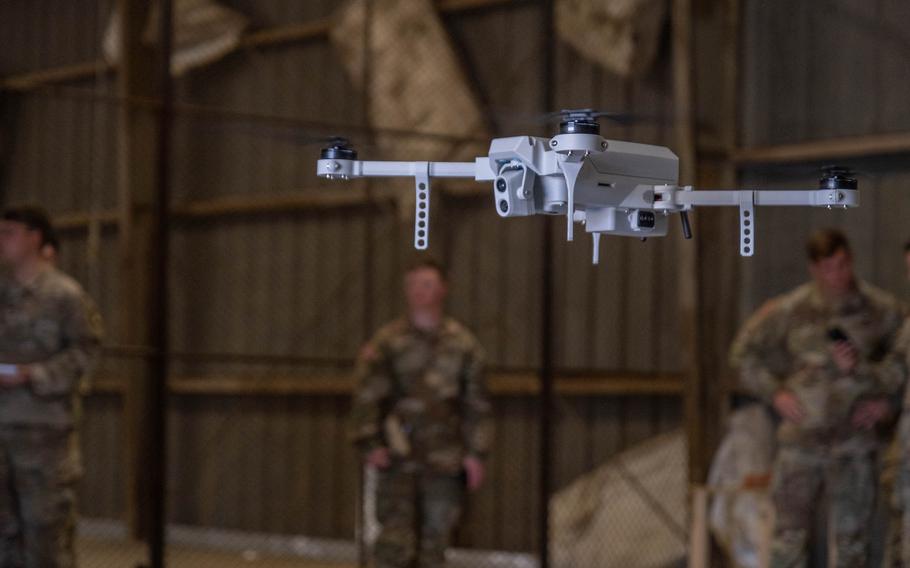
The 3D-printed drone developed by the U.S. Army's 101st Airborne Division takes its initial flight Oct. 10, 2024, at Fort Campbell, Ky. The drone is set to be tested during Operation Lethal Eagle in the spring. (Kaden Pitt/U.S. Army)
An Army division that became legendary for the World War II exploits of its paratroopers is carving out a new niche in the sky in anticipation of future battlefields.
The Kentucky-based 101st Airborne Division launched its own drone-making mission, which is aimed at getting cheap aerial systems into the hands of soldiers for experimentation, the unit said this week.
The initiative is the latest push by the Army to incorporate the commercial-type drones put into effective use by both sides in the Russia-Ukraine war into U.S. Army combat formations.
Relying on a 3D printing program, the groundbreaking effort will revolutionize how troops operate, the division said in a statement Tuesday.
“This is bigger than simply printing parts,” Col. Travis McIntosh, a deputy commander for the 101st, said in the statement. “We are reshaping the (small drone) enterprise at the tactical level.”
The plan is to produce 100 of the systems at the division’s home base at Fort Campbell through a joint effort with the 5th Special Forces Group.
While the U.S. military has relied on large, long-range drones for many years, the war in Ukraine has showcased how cheap, off-the-shelf technology can also make a difference on the battlefield.
In 2023, U.S. European Command’s Gen. Christopher Cavoli singled out such devices as having “a paralytic effect” on Russian forces.
Russian troops also have been effective at using similar systems. Furthermore, China and Russia “are surging ahead in the realm of (small drones) while the United States moves at a relatively glacial pace,” the Modern War Institute at West Point said in March.
The institute’s report noted that Ukrainian troops trained by Americans were shocked by U.S. soldiers’ general ignorance of drone warfare tactics.
Soldiers at the small-unit level need to be supplied with large numbers of expendable drones so platoons and squads can experiment in the field and develop standard operating procedures, according to the report.
The 101st Airborne said its push to manufacture such systems came in response to requests from soldiers for more versatile, durable and expendable drones than what have so far been available.
The statement did not say how much production costs, but the new drones will be tested in the spring during an exercise dubbed Operation Lethal Eagle, which is focused on various Army prototypes and initiatives.